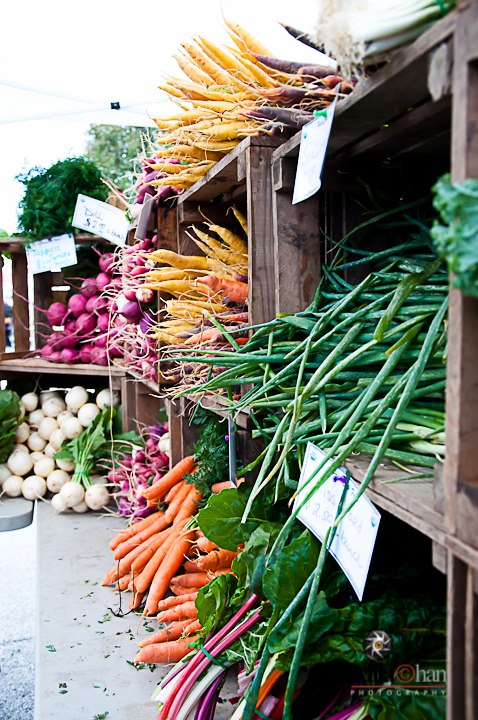Purple and Orange Carrots
There are super foods and then there are Super foods! One of the most overlooked and underappreciated of super foods are the purple carrots. It wasn’t always this way.
There was a time in history when the whole world knew that carrots weren’t the familiar orange but the purple. Purple carrots are known to have been relished and appreciated as far back as over five thousand years ago. They are believed to be first cultivated by the Afghanistan peoples and were later known the Romans and then lost to obscurity, at least by Western standards until the 16th century. In fact, they were so highly thought of not only as a food but also for other uses, that they were also the source of dyes for both Afganistan and Roman royalty.
Purple, orange and white carrots - Priscilla Chan Photography
© 2012
Before we talk about purple carrots there is something about carrots everyone needs to understand -- while we refer to them as root vegetables, the fact is all carrots are Eurasian herbs, at least the wild ones are.
Additionally, there are a couple of secrets to know about purple carrots. First of all, purple carrots are much sweeter tasting than orange carrots. In fact, they are an ideal food due to the fact that it is not necessary to add sugar to them. Many cooks feel the need to add sugar to carrots, especially in trying to get young children to eat their carrots. With purple carrots this is no longer needed. All carrots are among the healthiest foods to eat and grow and purple carrots are doubly so. Secondly, they are better for your heart, your blood pressure, and your liver than almost any other root vegetable.
Orange carrots - Priscilla Chan Photography
© 2012
Orange carrots in contrast to purple carrots, didn't arrive on the food palette scene until the 16th century and it's believed they are mutations that were cultivated by the Dutch. That makes them good but not nearly as good for you as original purple carrot varieties.
Growing Carrots
Growing carrots of all colors is a very simple thing. Normally, you sow the tiny seeds very thickly (since germination is slow and poor) in small holes that are only 1/2 to 3/4 inch deep, while keeping your rows far enough apart for working between them (generally 18 to 24 inches apart is recommended).
You then thin them when the plants are 3 to 4 inches high to about the same in terms of number. Keep in mind that young carrots are very tender and at their peak with respect to flavor. Also remember that if you like carrots these are one food source that you can sow successive crops every two weeks up until July in most locales.
Where to Buy Purple Carrot Seeds


